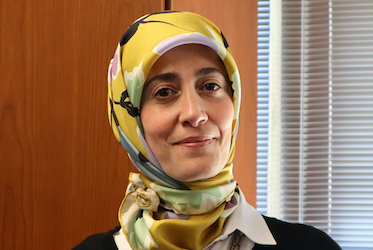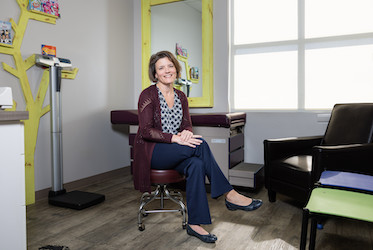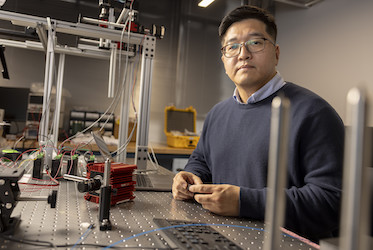
National Paper Airplane Day: A Gateway to Aerospace Engineering
MARIETTA, Ga. | May 26, 2020
Airplanes represent some of the most complex feats of engineering, but Kennesaw State University professor Adeel Khalid said the most basic design principles of an aircraft can be explained with just a piece of paper.
In fact, he believes folding paper airplanes can often serve as a gateway into aerospace engineering. At Kennesaw State, he has used it as an educational tool for middle and high school students attending summer camps of the past. At home, he folds them with his 5-year-old son as they compete against one another for the best design. On May 26, he will join countless others in celebrating National Paper Airplane Day, which commemorates the simple aeronautical toy.

“You can learn quite a bit about aircraft design just by crafting little pieces of paper,” said Khalid, resident aerospace expert and professor of systems engineering in the Southern Polytechnic College of Engineering and Engineering Technology. “In terms of shape, form and how it flies, there isn’t much difference from a model plane to a full-scale version. In fact, a lot of testing nowadays is conducted using model airplanes.”
There are a lot of disciplines in aircraft design, such as structures, propulsion, and stability control, that wouldn’t be fairly tested using a simple paper airplane, he added. However, the aerodynamics remain mostly the same. There are typically two distinct categories when it comes to paper airplane design: those built for distance and those build for endurance. At his former summer camp on the Marietta Campus, he held a competition for each category, noting that designs varied greatly based on the mission.
If it is designed to fly great distances, a paper airplane should have a lower aspect ratio, meaning a slender body and shorter wings. He compared this design to a fighter jet, which are engineered to cover great distances in a short amount of time. If the students were looking to build a plane that can stay in the air longer, he would recommend they build one with a high aspect ratio, meaning they have larger wings that generate more lift to keep the craft aloft. The design bears resemblance to a glider, which often feature skinny, long wings to keep the craft in the air for extended periods.
For students in Kennesaw State’s aerospace engineering minor, aircraft design is taken to advanced levels. Using the Aerospace Education and Research Organization (AERO) Lab in the Engineering Technology Center, students are able to design aircraft using computer-aided design programs and then immediately 3D print their designs on state-of-the-art printers. Khalid said aerodynamics of the crafts can be studied in the lab’s wind tunnel, and students are even able to fly their own airplanes virtually using one of several flight simulators.
The research conducted in the AERO Lab often translates to success in competition. Recently, the University’s Aerial Robotics Competition Team bested more than 60 teams representing schools such as the University of Pennsylvania, the University of Michigan and the University of Virginia en route to a fourth-place finish at SAE Aero Design East, an annual international aerospace competition.
– Travis Highfield
Submitted photo
Related Stories
A leader in innovative teaching and learning, Kennesaw State University offers undergraduate, graduate and doctoral degrees to its more than 45,000 students. Kennesaw State is a member of the University System of Georgia with 11 academic colleges. The university’s vibrant campus culture, diverse population, strong global ties and entrepreneurial spirit draw students from throughout the country and the world. Kennesaw State is a Carnegie-designated doctoral research institution (R2), placing it among an elite group of only 7 percent of U.S. colleges and universities with an R1 or R2 status. For more information, visit kennesaw.edu.



















